
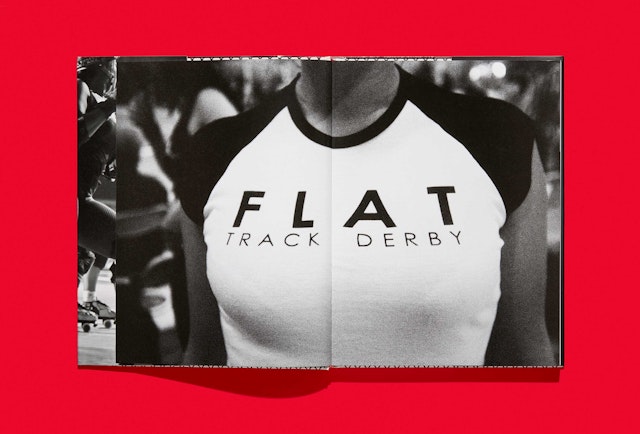
Despite their differences, the women of roller derby derive the same benefits from their experience: confidence and camaraderie.
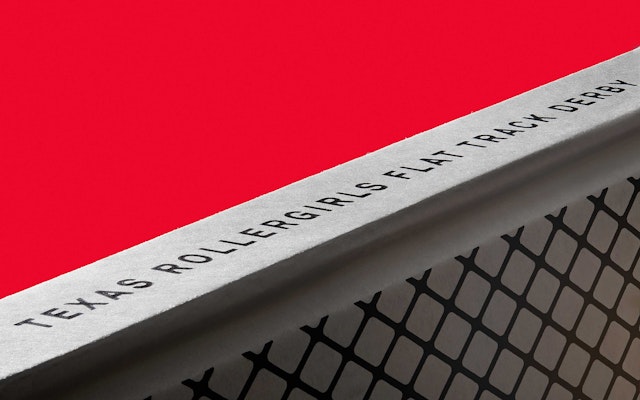

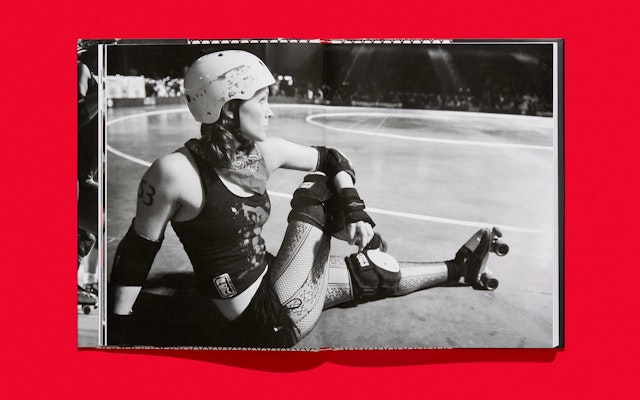

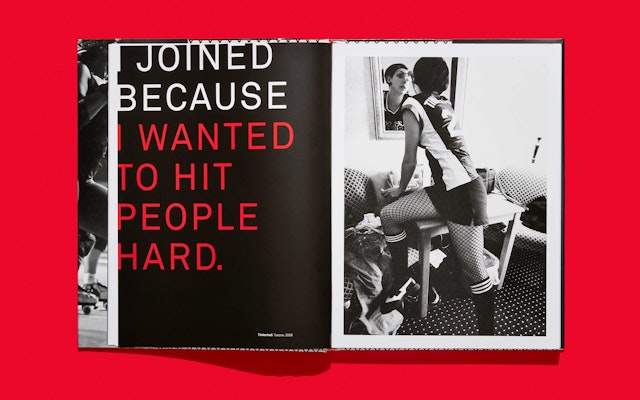
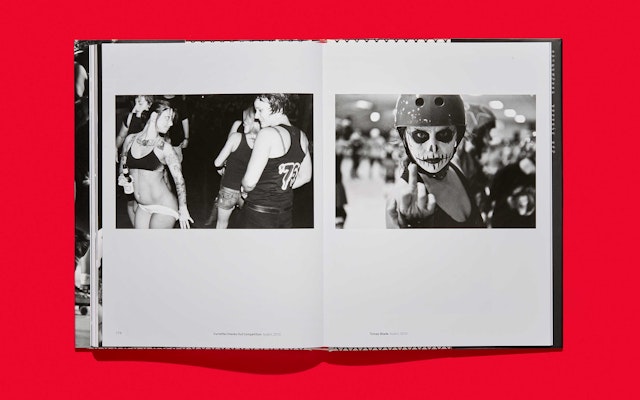
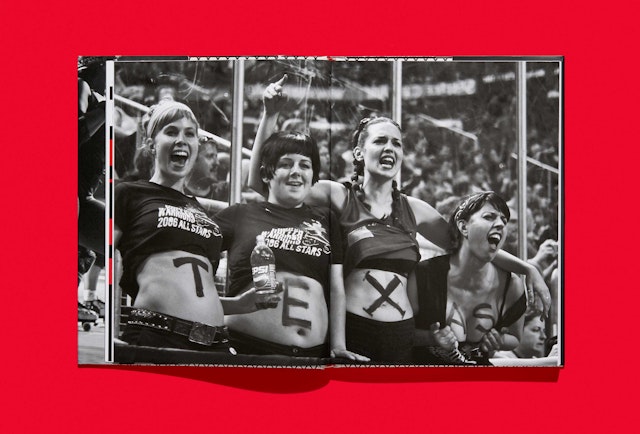
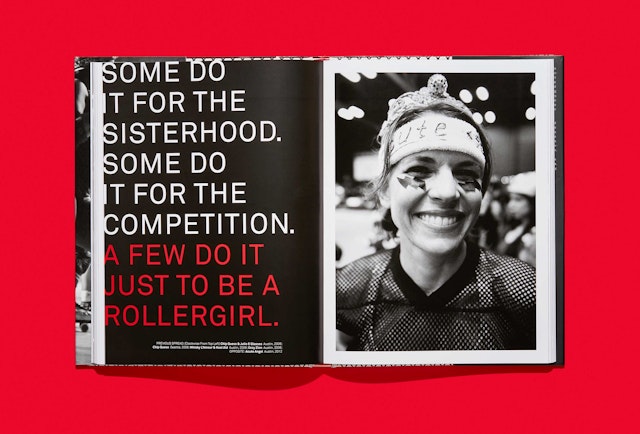
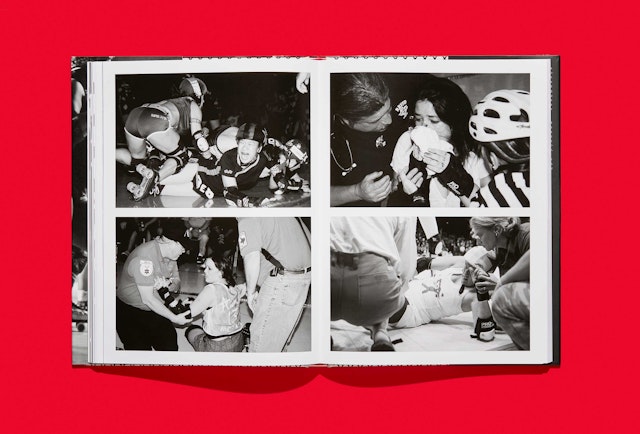
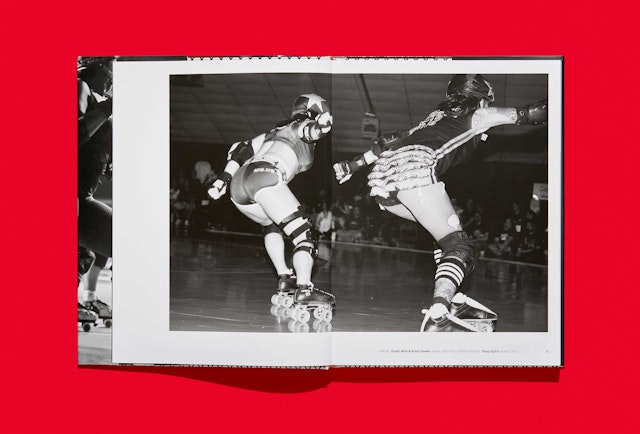
Pentagram Austin has recently completed the design of one of the first serious photographic monographs of women’s roller derby ever published. “Texas Rollergirls Flat Track Derby” by Felicia Graham is a 230-page romp through the burgeoning sport–Texas style. Graham began photographing the Texas Rollergirls when she was getting her masters in photojournalism at the University of Texas. She was looking to shoot something outside of her typical schoolwork. She found it. Her friend, Electra Blu, a founding member of the Texas Rollergirls league, invited Graham to a bout in Austin and from that point on she was hooked. She has been documenting women’s roller derby ever since. The new book is a showcase of the photographer’s passion for the sport and its culture.
Since that fateful day in 2005 Graham has covered most of the Texas Rollergirl’s local bouts and has traveled with the team to away matches all over the world including their first international trips to Canada and London. If you ask a Rollergirl where the heart of women’s roller derby lies, she’ll answer Austin, Texas. Flat track roller derby is one of the fastest growing sports in the country. What started in 2002 as a single league in Austin grew to 63 in 2005 to nearly 2,000 leagues today.
“The reason I wanted to do this book is to bring my extensive documentation of the godmothers of modern day roller derby to the masses,” says Graham. “These amazing women need to been seen...”
Women’s roller derby is a full-contact sport. The game consists of two action-packed skating periods that are split up into “jams.” Each team has five players. One jammer, one pivot, and three blockers from each team line up to begin the match. The jammer wears a star on her helmet and is the point scorer. When the whistle blows the jammer tries to make her way through the pack cleanly. The jammers begin to score points during their second pass through the pack. For each opponent the jammer legally passes the team is awarded one point. The more times the jammer passes through the pack the more points are scored. “Flat Track” refers to the flat playing surface, gym floors, warehouses and other venues, that allows the spectacle to be staged anywhere.
The rough and tumble nature of the game may imply that it’s a sport for certain types of women. This is a fallacy according to Graham. Women from all walks of life skate flat track roller derby. Their ages range from eighteen years old to woman well into adulthood. While some women are athletic others have never played a competitive sport. Despite their differences, the women of roller derby derive the same benefits from their experience: confidence and camaraderie. They may come into the league as wallflowers but they leave as strong, independent women with friends for life.
The book includes photographs of skaters with “player-handles” like Dinah-Mite, Rollin Sweet, Tinkerhell, Molotov M. Pale, Bloody Mary, Loose Tooth Lulu, Slim Kickins, Yellow Die, Lucille Brawl, Betty Rage, Jen-N-Tonic, Vicious Van GoGo, Cat Tastrophe, Pussy Velour, Babe Ruthless, Olivia Shootin’ John, Anna Mosity–you get the picture. The foreword was written by Melissa Joulwan, a.k.a. Malicious, a former Texas Rollergirl and author of “Rollergirl: Totally True Tales from the Track.” Dennis Darling, an accomplished photographer and Director of the photojournalism department at the University of Texas, wrote the afterword.
“What the sport is today is a place where woman can be what they want to be,” says Graham. “They dedicate themselves to the bigger picture.”
Office
- Austin
